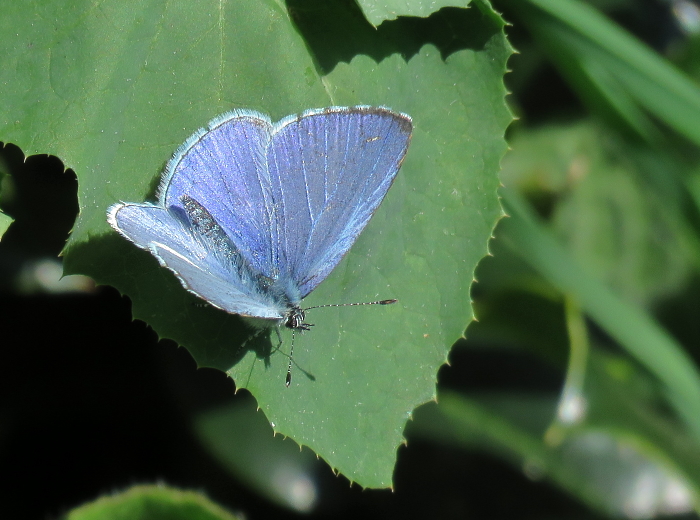HI David. I've only named one of them so far - the one with the deformed tail. I called him Willy Wonka. However, I've been surprised by how easy it has been so far to relocate particular individuals. Even the fourth instar ones seem to be remaining on the same twig or branch at the moment.
This is a third instar cat laid up for the moult yesterday, photographed by day (harder to find but easier to photograph!):

You can see a lot of silk especially at the head end but also at the tail, where he has secured himself to the leaf (and the neighbouring leaf). He looks particularly fat and ready to pop!
And this was Willy Wonka yesterday - also laid up for the moult:

Here, you can see the silk at his tail end. He has been on that leaf every time I have looked since 12th April.
I relocated Willy Wonka tonight. He was on the same leaf but has now moulted and turned round, so his head end is at the shed skin. I took a couple of pictures very gingerly but speedily, using my iPhone as a light, so as not to disturb him. When I took the photos I wasn't sure if he had actually finished moulting and didn't want to cause problems:

In this picture, the tail end still looks wonky, though it might be an effect of position and shadow. I'll try and get better pictures tomorrow, now I know he is fully moulted.
Also tonight - and hardly a less awful picture - I photographed this rapidly growing fourth instar larva, busily engaged in eating:

And finally, a shot of typical
w-album leaf damage, photographed yesterday:

In my previous experience, during the final instar (fourth), leaf damage is a good indication of where caterpillars were but not necessarily a guide to where they are!
I say finally, but I should close with this lovely male holly blue in our garden today:

Guy
EDIT:
Just been outside to see if the comet (Atlas) is photographable yet. It isn't - quite - being about mag 5.9, but will be soon. Nearby stars of mag 6+ were visible to the camera, but stars of course are pointlike, not diffuse, so much easier to pick up. Atlas is predicted to be an easy naked-eye comet by the time it reaches perihelion.
So instead of the comet, I photographed the magnificent constellation of Corona - the beautiful diadem in the sky I have gazed up at since I was a child. Never did I guess then what new meaning its name would acquire in 2020 ...













































